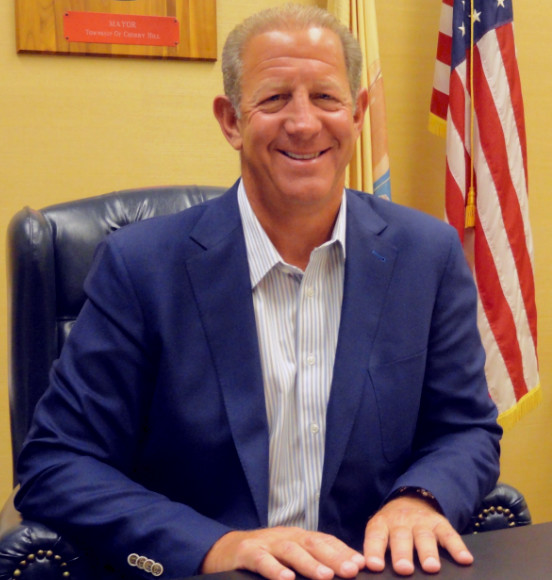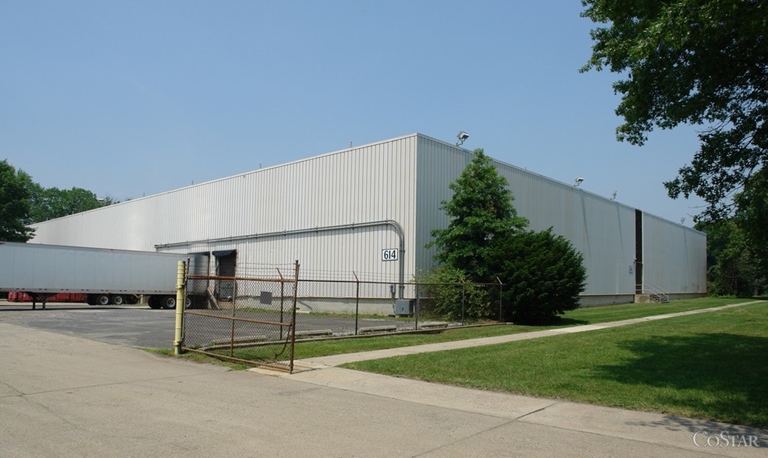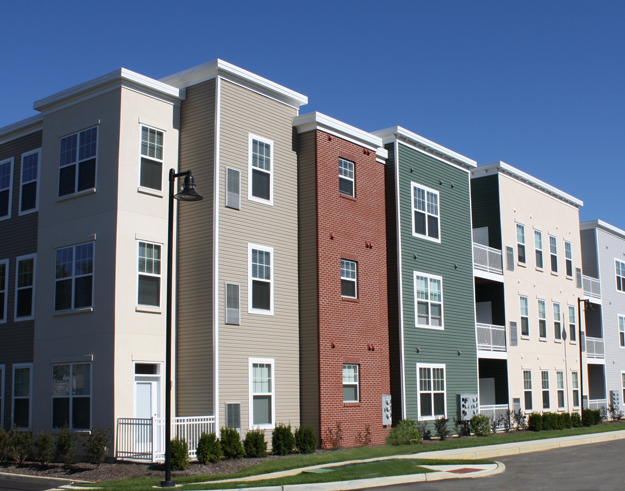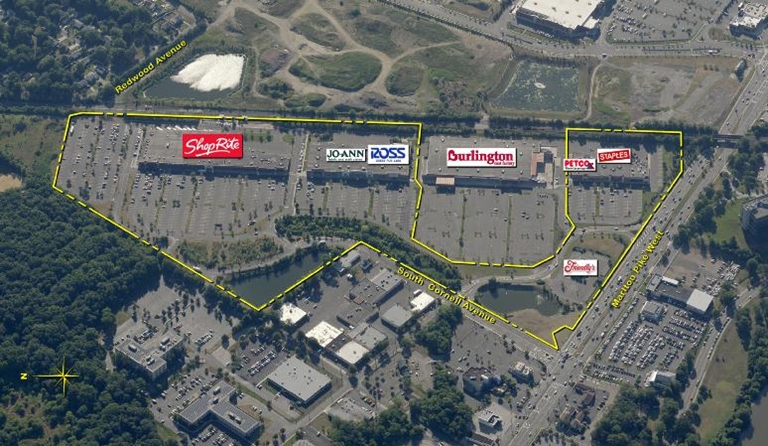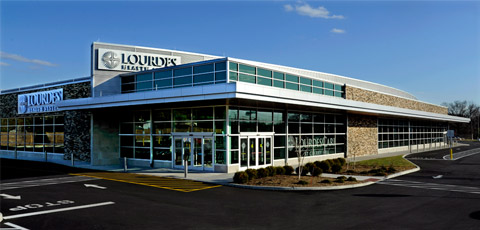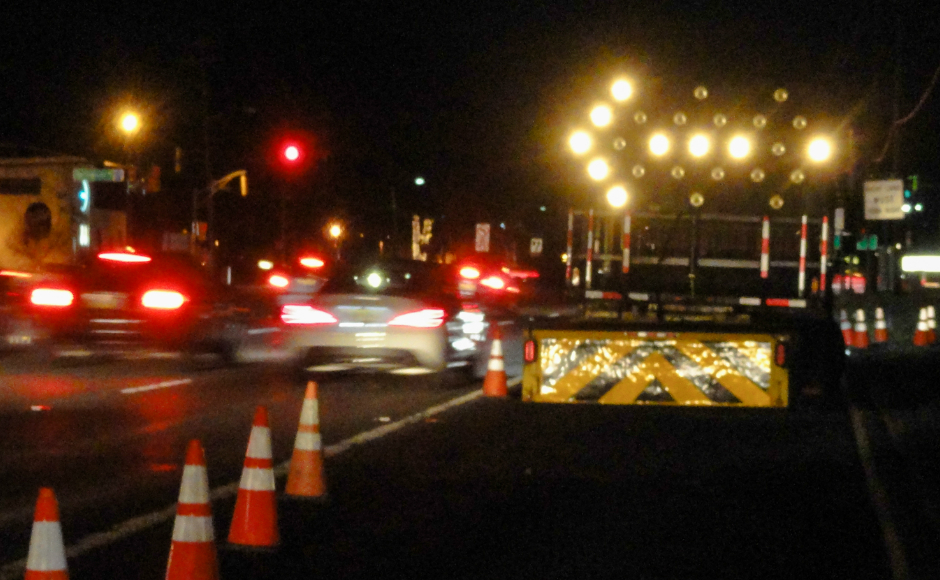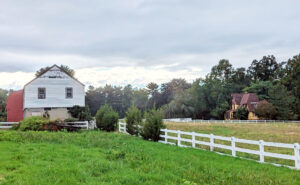From finding new uses for township gateway properties to repaving Route 70, the mayor discusses affordable housing, commercial development, and community priorities.
By Matt Skoufalos
Just as it is in most communities in New Jersey, in Cherry Hill, redevelopment is the name of the game. In the past year, the township has designated four parcels of land to be transformed from defunct industrial or commercial properties into something more–and that’s just a start. The township also recently settled litigation with Fair Share Housing, answering a lot of questions about its affordable housing obligations and open space preservation.
But in considering the future of Cherry Hill, which was once dominated by miles of farmland, and which now includes miles of strip malls and corporate office buildings, it may find new definition as an outpatient hub for medical services, says Mayor Chuck Cahn. We sat down with Cahn to discuss the overarching vision for a community in the midst of transition, how smart-growth principles apply to a town of distributed housing developments, and plans to re-pave Route 70.
NJ PEN: Last year, your office announced plans to redevelop four Cherry Hill “gateway properties” comprising about 53 acres on the west side of town along Hampton Road, North Park Drive, Route 38, and Cuthbert Boulevard. Can you give us an overview of that project?
CHERRY HILL MAYOR CHUCK CAHN: One of the things that was a priority when we first got into office was utilizing these underutilized areas—the old hotels, the empty warehouses—really focusing on these areas and trying to find ways to redevelop them.
We thought the timing was really right to embark on a study of those areas in need of redevelopment and see what would be the highest and best use of those areas. We decided we needed to take the bull by the horns at all of these sites.
- The Hampton Road Gateway (19 acres at Hampton Road & Cuthbert Boulevard): Former warehouses for the Saunders Publishing Company; empty for at least 10 years with developer interest but no activity.
- The Park Boulevard Gateway (7.3 acres at North Park Drive and Bishop’s View Circle): Includes America’s Best Value Inn, vacant Temple Emmanuel synagogue, and an adjoining parking lot.
- The Cuthbert Boulevard Gateway (13 acres on Cuthbert Boulevard): Includes a long-vacant former Verizon site, Baker Lanes, the Inn of the Dove, and Du Bell Lumber.
- The Route 38 Gateway (14 Acres on Route 38 near the Cuthbert Boulevard PSEG substation): Includes the Feather Nest Inn, Days Inn, and Hillside Inn.
These first two have been formally declared redevelopment properties; the latter two are still under preliminary review.
NJ PEN: What’s the timetable on those projects?
CAHN: Anything that happens on these sites is going to take years and will be phased in. It’s not anything that’s going to happen all at once. It’s up to a developer to actually come forward with a plan and then figure out all of the financing.
The [Hampton Road Gateway] is vacant buildings; the impediments to develop are probably less. Park Boulevard is probably the best site; it’s against the park, it’s got the best views. But you also have an active business in there. Although it has been for sale, that has to be figured into the redevelopment as well.
I think the reality is that multi-family housing is something that’s very popular right now. People want to be in Cherry Hill. They think it’s a good place because of its proximity to Philadelphia and major highways. It’s got to have some mixed-use feel to it. Ultimately, it’s up to the planning board to decide what the plans should be.
NJ PEN: You’ve mentioned that some of the hotels zoned for redevelopment properties are functioning as cheap apartments for people who can’t afford local housing. What happens to those people when the site changes?
CAHN: As the mayor of Cherry Hill, it’s not the highest and best use, or what you want to have on your doorstep. We had over 4,000 police calls, mostly for drugs and prostitution, in these particular hotels in the past three years. That’s a lot of drain on resources.
We’re always concerned about anybody who is living in Cherry Hill. We would work with the county and the agencies that usually place people there. There are lots of alternatives in other towns and in our own town. It has to be done appropriately and with enough notice.
NJ PEN: Will the redevelopment plans be affected by any affordable housing obligations?
CAHN: We have to provide places for potential affordable housing: overlays, senior living, group home mechanisms.
Our obligation as a township is just to provide the realistic potential. That’s all towns do. Whether it ever gets built or not, it’s not our responsibility. We promote good housing.
Part of our settlement with our affordable housing litigation was to protect all of our open space: Woodcrest Country Club, Springdale Farms, Merchantville Country Club. We believe in not using open space for development.
What we want to have in Cherry Hill is good, positive development. Places like Dwell or ProBuild, which we think is good housing for Cherry Hill, will have an affordable housing component.
Really it’s “workforce housing”; in Cherry Hill, that’s what it means. It’s a firefighter, it’s an EMT driver; it’s a teacher who’s just starting out. It’s an IT guy who’s just coming out of school; a family of three. These are workforce employees.
NJ PEN: What’s the apartment inventory like in Cherry Hill right now?
CAHN: There are 4,000 apartment and rental units in Cherry Hill, which is still far below the total absorption of what a planner would say the capacity of Cherry Hill is, even with the maximum that would be built at these redevelopment areas and Garden State Park, which is zoned for 1,644 units.
Garden State Park is still under development and being absorbed quite rapidly. Dwell is coming online; they’re not 100 percent ready to be occupied yet. The Brace Road strip mall that was Pro Build/Haddonfield Lumber will be 152 units. It’s not in a redevelopment area.
NJ PEN: Are you concerned about the density of the housing on Brace Road?
CAHN: We don’t believe in dense housing. We’re talking 18 units per acre, maybe 20 units per acre. The densest family unit in Cherry Hill is Bishop’s View, which is 22 to 24 units per acre.
We’re very careful with the densities so we don’t have an over-parked area. Our greenspace requirement in any of our developments is very stringent.
NJ PEN: Even if these housing units aren’t overly dense or over-parked, they’re removed from a lot of public transportation options. How do you get mass transit to these properties?
CAHN: What we really needed in Cherry Hill 30 or 40 years ago was a really great planner, and we didn’t have that.
Cherry Hill is really spread out. It’s a confluence of major highways. It doesn’t have the luxury of a Moorestown or a Haddonfield where it’s transit-oriented.
We have buses that run through, but if you want to live in Cherry Hill, you have to own a car. We’ve tried to balance that with a sustainable bike and pedestrian master plan. All our new roads will have sidewalks and bike paths. It’s hard. Over time, maybe people will use their bikes more. But if we don’t provide it, they’ll never use it.
We are making other accessibility improvements; a big one is the Kenilworth Connector Trail. There’s [a 144-home] neighborhood adjacent to the Garden State Pavilions, a major shopping center, and they can’t get there. If they drive, they have to go three miles out of their way, but they could walk there in six minutes.
We want to invest about $245,000 to build a safe trail to food, which would be ShopRite, and transportation, which would be the NJ Transit station. We think it’s a great move to show how a transit-oriented neighborhood should have access. It will be paved, lit. A contract for the work was awarded July 27; we’re waiting for an easement from NJ Transit.
NJ PEN: Do you think Cherry Hill has really suffered because it didn’t have a better planner 30 or 40 years ago?
CAHN: We don’t have a downtown, but that’s Cherry Hill. We have neighborhoods. I’ve lived here my entire life. You can’t have it all.
It all started with the Cherry Hill Mall. The mall is a great place; people know Cherry Hill because of the mall. The mall has reinvented itself, and that’s spurred redevelopment all along Haddonfield Road. All of the old buildings are being torn down and turned into something new and creative. The racetrack goes out of business and somebody comes in with these big plans for redevelopment. Because of the mall, because of economic development, our proximity to Philadelphia, it’s been a tremendous success.
NJ PEN: When you look at the outgrowth of that economic development, though, it’s a lot of strip malls, office parks, and big-box stores.
Are you concerned about being stuck with these big properties down the road?
CAHN: We don’t want to just be known for shopping, but when you look at the license plates in the Wegman’s parking lot, probably 40% are Pennsylvania license plates. Now our vision is a little bit different, and we’re trying to influence that: not just to be a shopping mecca, but to be a regional medical hub.
The University of Pennsylvania announced a 150,000 square-foot medical center in the center of Cherry Hill, where SYMS used to be at the corner of Marlkress Rd and Route 70. Talk about a positive re-use! Kennedy Hospital has broken ground on two phases of about $200 million to reinvent their entire Cherry Hill campus. [
There’s] the Lourdes site across from Ponzio’s at the center of Cherry Hill at Brace Road and Kings Highway and Route 70. Cooper Hospital is looking to build a medical center in Cherry Hill as well. Virtua just purchased three large properties and is building a large medical center on Route 70 next to Republic Bank.
This is outpatient services; these are people going to see the doctors because not everybody wants to go to Philadelphia. It started with Lourdes making their investment, and when people saw the success that Lourdes has had, people started to pay attention [to] their ability to build that facility in less than 10 months and their cooperation with the township.
I love the fact that it’s just not shopping centers. From a strip-center town of shopping, add to that a regional medical hub that serves the entire region of South Jersey. We try to make it easy for businesses small and large to come to Cherry Hill. We cooperate. We don’t put up roadblocks. That’s why we’re opening 10-15 new businesses every single month.
NJ PEN: Are there still plans to fix up Route 70?
CAHN: Route 70 needs to be redone. That is probably the biggest challenge that we have right now: to all of this development, the fact that Route 70 has not been redone yet is a bit of crime. It is going to have a major impact.
When it does start, it’s going to put Cherry Hill on hold for a couple of years because it’s going to be difficult to deal with the traffic when you deal with a major road like this.
Hopefully Penn will be in by then, Kennedy will be done; all the other major projects.
In the next two years, Route 70 will get started; early 2017 is what the plan is. There’s all the engineering work, a bunch of offsite improvements that need to be done, median work, landscaping. We’re not changing the width of the roads, but we want to make sure it’s going to look pretty when it’s done.
NJ PEN: What’s it going to cost?
CAHN: It’s a big number. I am told it’s [comparable to] the cost to do that whole Olga’s circle bypass. It’s not just repaving, it’s ripping up the road; re-grading, re-curbing.
NJ PEN: What do you see as being the ultimate result of all this development? What’s your long view for the community?
CAHN: Cherry Hill is a big town with a lot of residents with a lot of opinions. I take my responsibility as mayor very seriously, and finding the proper balance is important.
But having positive economic development will sustain this town for the next 30 years; having an increase in ratables when most towns around us are struggling. We’ve held our taxes with no increase for the last four years, and increased services as a result of that ratable growth [while] having good schools; all the things you want to have.
We had 900 home sales the entire year last year, and already this year we’re up to 700 at the end of June. We’re only halfway through the year. So people see the value of Cherry Hill, and I think that’s because we’ve made it more affordable by keeping our taxes stable. We hear from people who’ve moved here from other towns that they get a lot for their money. It’s an affordable place to live; yet it provides great benefits: great services, great schools, great access to the shore, to Philadelphia to New York, to major highways.
Is it everything to everybody? It doesn’t have a downtown. If that’s important to you, then you go live in Moorestown or Haddonfield or Collingswood. All you can do is make your town the best it can be. I think it’s a much better place today than it has been for maybe the last 10-15 years.
Get more local news that matters. Check out NJ Pen on Facebook and Twitter.


